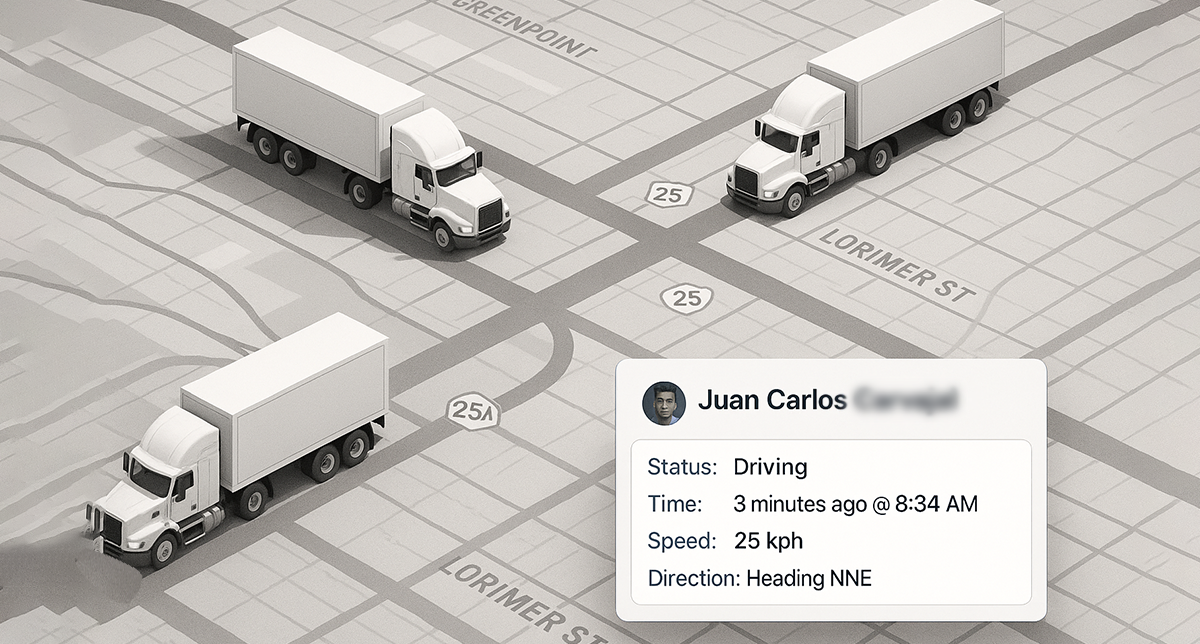Why 37% of Freight Still “Disappears” in 2025

Why 37% of Freight Still “Disappears” in 2025
And What Fleets and Brokerages Can Actually Do About It
If you’re a carrier or a broker, you’ve probably seen it happen:
You check on a load, and the last GPS ping was 47 minutes ago somewhere outside Lincoln. You call the driver and there’s no answer. The receiver has already asked for an update. And you’re left staring at the screen hoping the truck didn’t stall, reroute, or worse.
This is a part of a growing and very real problem in logistics right now, and it’s called mid-mile blind spots.
The stats that can’t be ignored
According to Tive’s 2025 State of Visibility Report:
- 37% of logistics professionals say they regularly lose visibility during the mid-mile. The mid-mile is the stretch between pickup and delivery where most issues occur.
And it’s getting costly:
- Cargo theft is up 61% in the first half of 2025, with copper, electronics, and food-grade freight hit hardest.
- FMCSA continues to pull non-compliant ELD models from the market. Any carrier caught using them risks having a truck placed out-of-service on the spot.
In other words: when tracking drops off, someone pays. Often both sides.
Why shipments still “disappear” in 2025
Let’s call it what it is: visibility gaps happen when no one’s watching closely enough or when the systems they rely on silently fail.
Common reasons include:
- Dead zones on major U.S. lanes (I-80, SH-285, US-93)
- Firmware freezes or power faults on aging ELD units
- Revoked ELD models still active in the field, now banned by FMCSA
- Night/weekend gaps where nobody’s assigned to monitor exceptions in real time
These things happen daily. And when they do, the ripple effects are fast and expensive:
- Missed updates
- Failed check calls
- Service penalties
- Customer complaints
- Scorecard deductions
- Tender loss
The real issue: tracking is no one’s full-time job
In most operations, tracking is a “shared responsibility.”
Dispatchers do it when the phones are quiet. Carrier reps check updates between booking loads. But this model falls apart the minute something goes wrong, especially overnight or on weekends.
And that’s when you get the call. Or worse, the email with a claim.
What actually fixes it?
A dedicated exception management desk. This issue can’t be solved by using more or using the latest AI software use. Most carriers and brokers already have MacroPoint, Project44, or Samsara doing their job. The issue is what happens when something looks wrong.
That’s where a 24/7 human tracking desk comes in.
Real Case Study
Last week, a copper load went silent outside Omaha. The ELD had a blown fuse. The driver had no idea the signal was out. Our exception desk flagged the drop, called the driver within 5 minutes, confirmed the issue, arranged roadside, and pushed a clean update back to the shipper’s TMS and the shipper’s portal.
No penalties. No claims. No lane loss.
What a real exception handling team does that your team can’t
What you can do today
You don’t need to rip out your TMS or visibility tool to solve this. Start with:
✔️ Audit your grey zones. Look at where your ELDs typically drop offline for 15+ minutes. That’s where you’re flying blind.
✔️ Set clear exception triggers. Define what counts as a miss: Is it three missed pings? A time or location deviation? Make it consistent.
✔️ Assign ownership. If it’s everyone’s job, it’s no one’s job. Even a part-time person with full responsibility will outperform “shared monitoring.”
✔️ Automate the loop. If someone flags an issue, the fix needs to hit the TMS and the customer portal in real time not via email 3 hours later.
We offer a proven solution
If visibility gaps are hurting your team or your customer relationships, we can help you fix them.
We can build you a dedicated 24/7 exception-handling team that:
✔️ Follows your SOPs line by line—ETA update windows, escalation thresholds, detention flag protocols
✔️ Logs updates directly into your TMS or visibility tool—McLeod, Turvo, MacroPoint, Project44, Samsara, whatever you run
✔️ Covers both day and night shifts with pod-based continuity—so you don’t lose context at 06:45 when the hand-off happens
✔️ Records every check-call through VoIP with call ID tagging and centralized QA review
See how it works on a 15-minute walkthrough
[Book your call with our operations lead]




